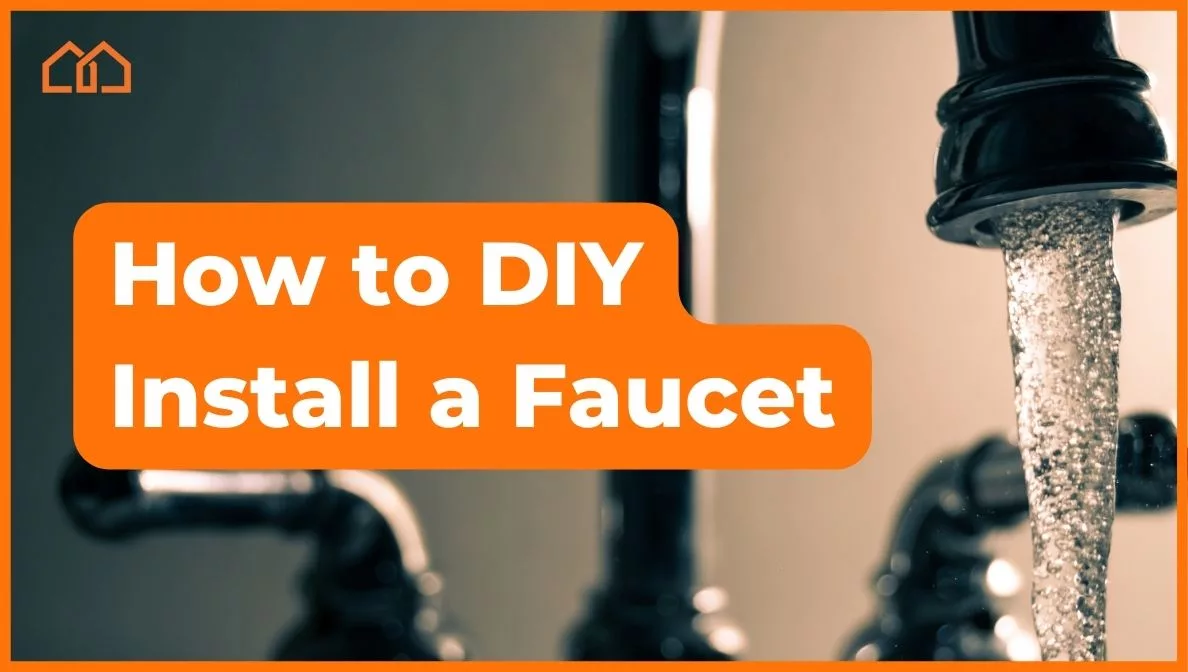DIY: How to Install a Faucet on Your Own
Knowing how to install a faucet can put money back in your pocket. Fixing things like this on your own is one of the ways property owners can save on home repair and improvement.
Home repairs can strike when you least expect them. When you have a leaky faucet, you can spend more on water bills and potentially have water damage in your home. Or, losing the function of the hot or cold water side of your faucet can make washing dishes a nuisance.
Turning this job into a DIY can save you hundreds of dollars. It can also make it easier to update your home without feeling the sticker shock of a plumber’s typical $100-$150/hour labor cost.
This step-by-step guide from Marketplace Homes will show you how to install a typical faucet kit that you would find at your local hardware store.
- Disclaimer: This guide is a general how-to. You should always look to your faucet’s manufacturer directions for specific step instructions.
Tools Needed to Install a Faucet
Replacing a faucet doesn’t require expensive tools. You don’t even have to be the strongest person either. Also, a lot of faucet kits come with complementary tools and accessories that can save you on tool expenses. Here the typical items you should have on hand to make the project happen:
- Adjustable wrench
- Bucket
- Protective eyewear and gloves
- Old towels
- New faucet
- Flashlight
- Cleaning sponge & dish soap
- sealant
Now that you have the tools for the trade, you can start the project. Be sure to wear clothing that you don’t mind getting dirty, because plumbing projects expose you to dusty places, murky water, and some considerable grime.
- Note: the following steps are written with replacing an existing faucet in mind.
Step 1: Turn Off the Water Supply
Below the sink, there are two valves that turn on the hot and cold-water supply. Shut these down by turning them clockwise until you can’t turn them easily anymore. Then, test the faucet by turning on the water. First, some water should come out, then it should stop. If you don’t turn the valves completely off, the water will still trickle.
- For most small projects, you can get away with turning off the water valves that connect to the faucet’s hot and cold-water lines. However, if you want to be 100% sure the water is off, or if you’re dealing with a more extensive project, you can locate and turn off the main water valve for the house.
Step 2: Remove The Old Water Supply Lines
After the faucet’s water supply is completely cut off, you should remove the old water supply lines. This should be done in specific steps to prevent water damage.
- Place towels around the base of each water valve.
- With an adjustable wrench, loosen the nuts that fasten the supply lines to the water supply valves.
- When you remove these supply lines, water will spill out. The towels should be sufficient to catch the water. If not, a bucket should help.
Step 3: Remove The Old Faucet
Every faucet should be fastened to the sink tightly at its base to prevent water leakage. Use the appropriate tool to loosen the old faucet’s base’s fastenings, whether it’s a pair of locknuts, one large locknut, or a threaded rod with a nut. Then, pull up the old faucet. Water may spill out during this process, so prepare accordingly.
Step 4: Clean The Sink Area
Now that the old faucet is gone, you may notice that the area that once housed it is dirty. Use dish soap and a sponge to clean this area so that the new faucet will adhere to the surface correctly.
Step 5: Connect the New Water Supply Lines to New Faucet
Some faucets come with water lines already connected to them, while others will instruct you to install the top part of the supply lines in the new faucet to make the installation 1000% easier. It’s important to have these lines connected to the new faucet before proceeding.
Step 6: Attach The Faucet
Your new faucet should come with its own fasteners that can be tightened under the sink. Simply place the faucet in the recommended holes (with the water lines attached), go under the sink, and turn the faucet’s fasteners until they are tight. Include everything the faucet kit came with, such as any washers, screws, locknuts, etc. This step is MUCH easier with the help of a friend who can hold the faucet steady and ensure it’s facing the right direction.
- If you are converting a three-hole faucet to a one-hole faucet, follow the manufacturer’s directions carefully. This step should involve placing a deck plate on top of the sink’s holes BEFORE placing the new faucet on top of it.
- When installing any new plumbing hardware, it’s recommended to wrap Teflon tape around areas where locknuts will be keeping things secure. This ensures an easy removal in the future.
Step 7: Connect The Water Lines to The Water Supply
Now that the faucet is securely attached to the sink, you just need to connect the new water supply lines to the hot and cold water supply sources. Be sure to connect the ‘cold’ line to the cold water supply and tighten its lock nut securely with a wrench. Do likewise with the hot water supply line.
- Note: If you are installing a more complex faucet that involves counterweights, such as a pull down and spray faucet, you need to carefully follow the manufacturer’s directions regarding flushing lines and connecting the extra spray line. This step should be done after you connect the water supply lines to the water valves.
Step 8: Turn on The Water Supply and Test the Flow
You can now safely turn on the water supply in the hot and cold lines by turning them in the opposite direction. You will hear water rushing back to the lines. If you tightened everything properly, no water should leak. If water starts to leak or spray from the seams, you need to turn off the water valves and tighten all your water line fastenings more securely.
- At first, there should be some pressure built up and even some popping noises as water supplies are restored. Don’t worry, this is normal. Then, after a few seconds of water flow, everything should flow properly.
How to Install a Faucet & More
At Marketplace Homes, we don’t just want our clients to find amazing homes and investment properties, but we want to empower them with knowledge about how to take care of their properties. Stay tuned for more installments from our DIY Chronicles where we share insightful home repair tips that will save you money (and time) with your home’s most common maintenance needs.
Alicia Persson is a Content Strategist SEO writer at Marketplace Homes, utilizing previous years of experience on real estate teams that specialized in investments and property management. Before she joined Marketplace Homes, she was also a freelance writer for 7 years, leading to a specialization in real estate and home living content for boutique digital marketing agencies. During her writing years, she learned the basics of SEO and gained experience writing for many different clients, making her versatile at creating diverse content.
She is a proud University of Virginia master’s graduate and enjoyed her undergraduate years at the University of Mary Washington. When Alicia is not writing, she plays keytar and sings in a local 90’s rock cover band, or she spends time with her amazing family.

